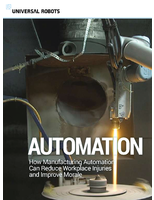Rubber Grade contains low volatility plasticizer.
Share:
Press Release Summary:
Krynac M 3340 VP grade of synthetic nitril rubber features polymer additive Mesamoll, which is alkane sulfonic acid ester of phenol that offers low volatility and compatibility with nitrile rubber. Mesamoll is classified as neutral in terms of physiological and toxicological makeup. Grade, suitable for contact with food, is resistant to oil and grease.
Original Press Release:
LANXESS - New Grade of Rubber with Phthalate-Free Plasticizer
Polymer additive Mesamoll - the green alternative
Leverkusen - As part of its Green Chemistry initiative, the specialty chemicals group LANXESS AG is launching Krynac M 3340 VP, a new grade of nitrile rubber that contains a plasticizer which is not considered as hazardous substance. In doing so, the LANXESS Technical Rubber Products business unit is providing an equivalent technological replacement for its predecessor Krynac E 3338 F, which will only be available on the market up to the end of 2009. At this point, LANXESS will have removed all phthalate-based rubbers from its portfolio.
Instead of a phthalate-based plasticizer, this newly developed synthetic rubber contains the polymer additive Mesamoll, an alkane sulfonic acid ester of phenol. Mesamoll is a popular plasticizer in the rubber industry thanks to its low volatility and excellent compatibility with nitrile rubber (NBR). It is classified as neutral in terms of its physiological and toxicological make-up. Due to recommendation no. 21 of BfR (Bundesinstitut fuer Risikobewertung, German Institute for Risk Analysis) the application of Mesamoll in nitrile rubbers with food contact is permitted.
In launching this new grade, LANXESS is actively supporting its customers who are trying to replace di(2-ethylhexyl)phthalate (DEHP). This is particularly true of the roller industry, where a switch to phthalate-free products for rollers with low Shore hardness is difficult to realize due to the high plasticizer content.
Nitrile rubber is one of the key raw materials used in the production of rubber articles because of its resistance to oil and grease. It is also used for applications that come into contact with foodstuffs. Typical applications include seals for machinery in the food industry, hoses for transporting oil and grease, conveyor belts and rubber articles for milking machines. Plasticizers are needed in order to produce the polymeric material "rubber" cost-effectively. They make rubber and plastic products flexible, pliable and elastic. They also ensure flexibility at low temperatures. The rubber raw material gradually acquires the requisite softness through constant kneading, but this treatment destroys some of the polymer's long chain molecules, which leads to the loss of other important characteristics. This is why chemists add plasticizers to the recipes. It also helps protect the rubber against the many solid additives, such as carbon black, that are added to the mixer during the kneading process.
In fact, in order to achieve the required properties, rubber components often contain considerable quantities of plasticizers, varying between 5 and 100 parts per weight depending on the application. For a long time, DEHP (also known as DOP) was one of the most widely used plasticizers for NBR. This phthalic acid derivative is classified as toxic to reproduction and is subject to mandatory labeling. Despite its declining popularity, DEHP is still found in many everyday products, because plasticizers are indispensable in the vulcanization process.
Effective alternative
Mesamoll and Mesamoll II are effective alternative plasticizers to the phthalate acid ester. They are not classified as hazardous materials, they exhibit low volatility and have a proven track record in the PVC industry. They are alkane sulfonic acid esters of phenol (ASEP), whose structure differs fundamentally from that of phthalic acid derivatives.
The alternative plasticizer is highly compatible with a wide range of NBR grades and mixes rapidly with the polymer. It is recommended for rubber articles that come into contact with foodstuffs and is included in the positive list of BfR recommendations, such as XXI, and the KTW (plastics for drinking water) recommendation, part 1.3.13.
LANXESS is a leading specialty chemicals company with sales of EUR 6.58 billion in 2008 and currently around 14,600 employees in 23 countries. The company is represented at 44 production sites worldwide. The core business of LANXESS is the development, manufacturing and marketing of plastics, rubber, intermediates and specialty chemicals.
You can find further information concerning LANXESS chemistry in our WebMagazine at webmagazin.lanxess.com.
Contact
Michael Fahrig
Spokesperson Trade and Technical Press
Tel.: +49 214 30 45041
Fax.: +49 214 30 44865
michael.fahrig@lanxess.com




